| Title | Bidirectional locomotion induces unilateral limb adaptations. |
| Publication Type | Journal Article |
| Year of Publication | 2024 |
| Authors | Hardesty, RL, Motjabavi, H, Gemoets, DE, Wolpaw, JR |
| Journal | bioRxiv |
| Date Published | 2024 Aug 23 |
| ISSN | 2692-8205 |
| Abstract | Humans can acquire and maintain motor skills throughout their lives through motor learning. Motor learning and skill acquisition are essential for rehabilitation following neurological disease or injury. Adaptation, the initial stage of motor learning, involves short-term changes in motor performance in response to a new demand in the person's environment. Repeated adaptation can improve skill performance and result in long-term skill retention. Locomotor adaptation is extensively studied using split-belt treadmill paradigms. In this study we explored whether bidirectional walking (BDW) on a split-belt treadmill can induce short-term gait adaptations. Twelve healthy volunteers participated in our single session, starting with 2 minutes of normal walking (NW), followed by four 5-minute blocks of BDW with a 1-minute passive rest in between blocks, and ending with another 2-minute of NW. We recorded body kinematics and ground reaction forces throughout the experiment. Participants quickly adapted to BDW with both legs showing decreased step lengths. However, only the backward-walking leg exhibited aftereffects upon returning to NW, indicating short-term adaptation. Notable kinematic changes were observed, particularly in hip extension and pelvis tilt, though these varied among participants. Our findings suggest that BDW induces unilateral adaptations despite bilateral changes in gait, offering new insights into locomotor control and spinal CPG organization. |
| DOI | 10.1101/2024.08.22.609228 |
| Alternate Journal | bioRxiv |
| PubMed ID | 39229004 |
| PubMed Central ID | PMC11370602 |
| Grant List | P41 EB018783 / EB / NIBIB NIH HHS / United States |

